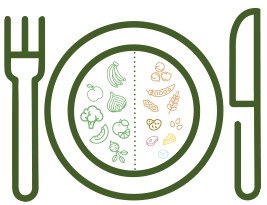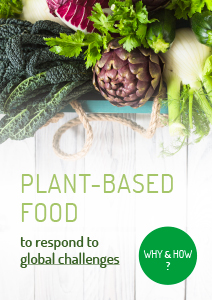Human health, responsible consumption and the fight against climate change go hand in hand with sustainable development. Here are some tips on what you can do in your everyday life to achieve these three goals, including adopting a sustainable diet.
The fight against climate change, and more
Climate change and weather phenomena are now becoming more extreme and frequent, and affecting countries all over the world. To combat these issues, strong action is needed as underlined by the Paris Agreement and the latest IPCC 2021 report. In concrete terms, what do we need to do as humans? We have to limit global warming to less than 2°C. However, actions to combat global warming must also take into account human health and well-being; enabling everyone to live in good health is also essential for sustainable development. Find out more about Sustainable Development Week.
One way to achieve this, and the third Sustainable Development Goal, is responsible consumption and production. This is consumption and production that aims to “do more and better with less”. In terms of food systems, the evolution of agriculture is essential. But how can we adapt our diet at an individual level?
6 tips for your well-being and that of the planet
Cutting greenhouse gas emissions is one of the main strategies of the COP21 (Paris Agreement), towards a low-carbon society. Here’s your first tip: adopt a flexitarian diet! This is the basis for a sustainable diet and one which can reduce the food-related carbon footprint by 50%. As part of the Eat4Change project, this study shows that a sustainable diet is in line with nutritional advice, without any additional cost!
A diet with less meat and more quality seasonal products: what is it about? The flexitarian plate consists of:
- Less meat (2 days per week)
- Less fish (2 meals per week)
- Fewer processed foods, soft drinks and alcohol
- More vegetables (double the portions), local and seasonal
- More pulses and cereals (to replace meat, fish, dairy products and eggs)

This advice confirms the importance of a transition towards a more plant-based diet, as part of the broader societal transition.
What sustainable foods should you put on your plate?
Check out our 7 tips in this infographic!
In order to achieve the three objectives mentioned above, we need to avoid over-consumption by adapting our food portions to our needs. This is a responsible diet – consuming some products in greater quantities, others in smaller ones – to limit the excessive use of the planet’s resources and to fight against overweight and obesity. There is currently a mismatch between the global production and the recommended consumption of several foods.
We then need to tackle food waste! This is the single most important lever to fight against world hunger and to help preserve our resources.
Finally, two additional tips: eat local and seasonal! This applies mostly to vegetables, for which seasons often make a difference. Did you know that seasons vary greatly between the northern and southern hemispheres? Check out our seasonal world calendar for smarter buying!
You may also like to read:
- A balanced or a sustainable diet: either or both?
- Is a sustainable diet a realistic goal in today’s world?
Reference: United Nations, www.un.org, sustainable development, consulted in August 2021. https://www.un.org/sustainabledevelopment/



 Bean sprouts
Bean sprouts  Eggplant
Eggplant  Vegetable garden: growing pumpkin
Vegetable garden: growing pumpkin 











